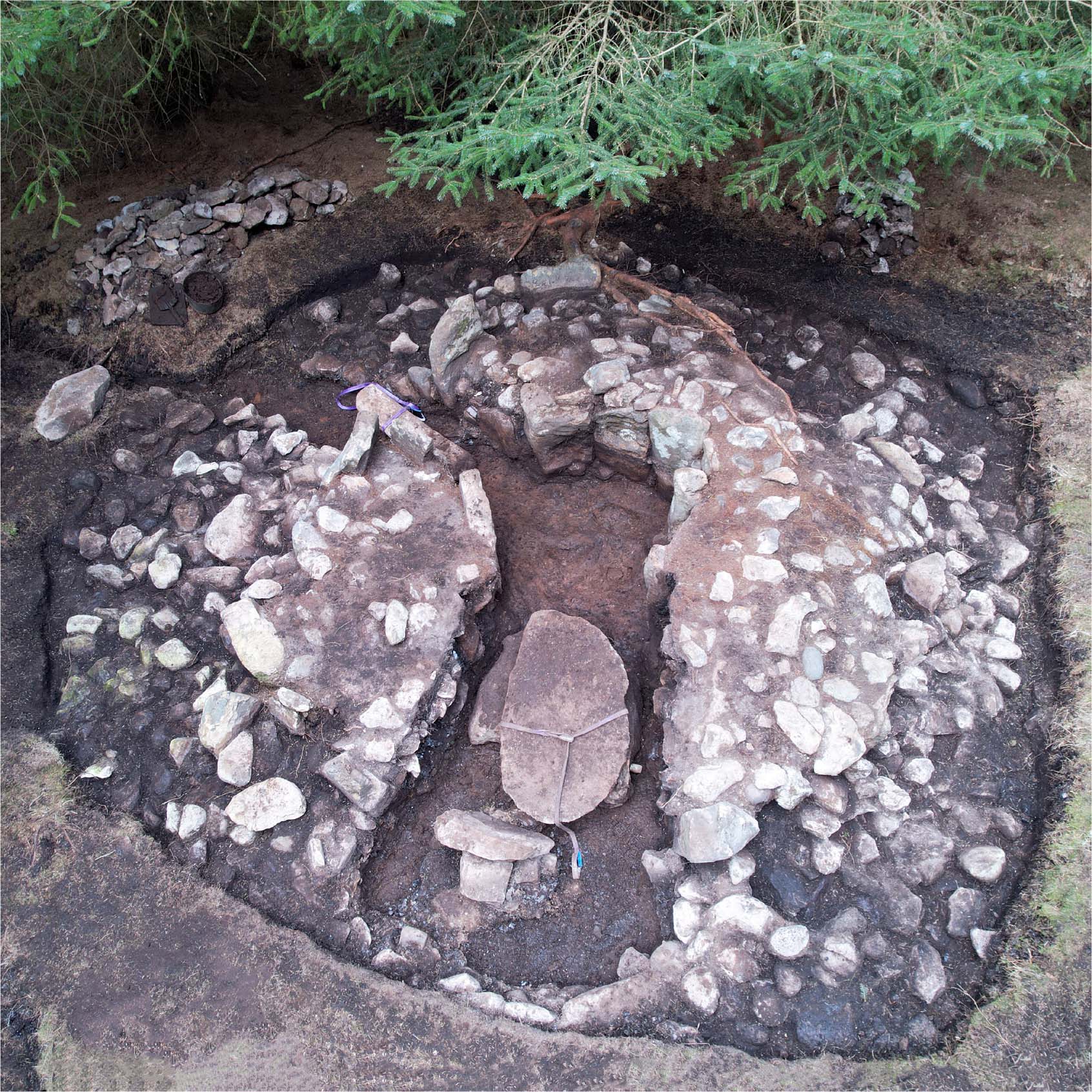Vol. 112 (2025): The re-examination of the Carmahome passage tomb, Isle of Arran, North Ayrshire

The re-examination of the Carmahome passage tomb, Isle of Arran
Authors: Clare Ellis, Matt Ritchie and Alison Sheridan
Contributors: Sue Anderson, Derek Hamilton and Susan Ramsay
Summary: The unusual simple passage tomb of Carmahome was partially excavated over the course of two days in 1924 by the landowner James Craig and archaeologist Ludovic McLellan Mann. This excavation revealed a small round cairn with a central chamber formed by a circular setting of ten upright stones and a short, narrow passage that led into the central chamber from the west. The monument had been cleared out, with just a single artefact (a flint knife) recovered from under one of the floor slabs. Almost 100 years later, in 2022, Carmahome was re-examined, with the primary aim being to search for organic material that could be used to radiocarbon date the construction of the monument and contribute to our understanding of this type of site. A total of seven samples were recovered and processed for radiocarbon dating by accelerator mass spectrometry (AMS). A Bayesian approach was then applied to the interpretation of the chronology of the archaeological activity at Carmahome, and the results appear to suggest that the monument was constructed during the Late Neolithic, around 3055–2890 cal BC, and was perhaps only used over the course of a few generations before being abandoned; the monument, then in a state of disrepair, was re-used in the Chalcolithic period, with a Beaker being deposited within. However, a second hypothesis is also offered, suggesting the cairn was constructed in the Early Neolithic, as a passage tomb with a low kerbed cairn, and then saw reuse in the Late Neolithic and Chalcolithic periods.
Keywords: Neolithic; chambered cairn; simple passage tomb; antiquarian excavation; excavation
Location: Isle of Arran, NR 9149 2685
Periods: Neolithic
Canmore ID: 39628

This work is licensed under a Creative Commons Attribution-NonCommercial 4.0 International Licence.




